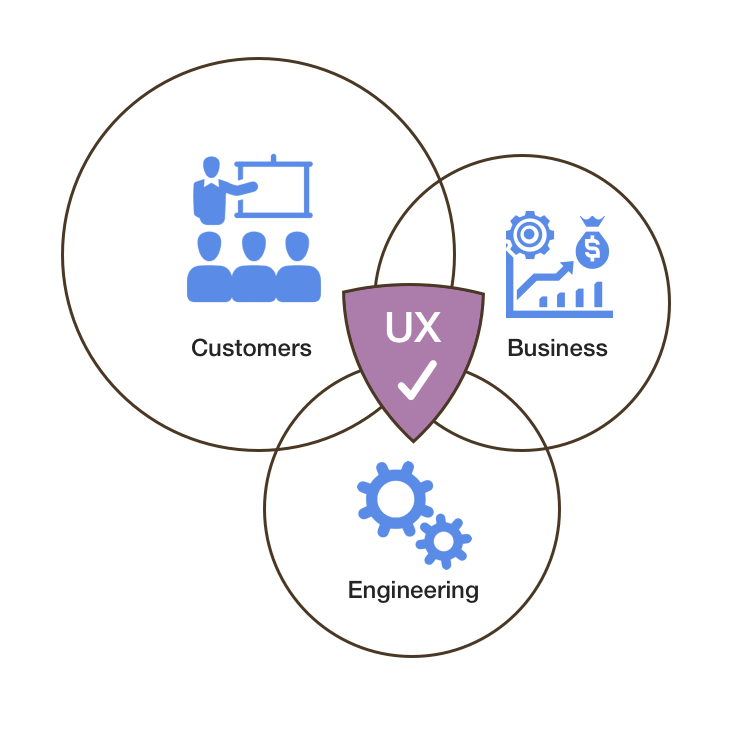
Envisioning a Single Branded Marketplace
Proof of Concept for an Enterprise Software Solution allowing customers to search and discover all of their educational content from one place.
Overview
Pearson is the leading educational content provider worldwide in the education industry. Currently, we have 30+ individually branded marketplaces for educators and students to onboard our products.
How could we give teachers and students a one-stop-shop for all of their educational needs in the same manner as Google, Amazon, and Netflix?
The Challenge
Design, prototype, and test a basic single educational marketplace as a solution meeting customer needs to discover and procure our next-generation courseware and educational materials.
The Problem
Customers have to first search using their preferred search engine for the specific site relating to their areas of interest.
The usual methods for the preliminary searches were Google and Yahoo.
To explore other disciplines and products, customers would have to start a new search from the beginning.
Search results would be displayed along with our competitor's sites, granting customers other publisher options.
Multiple marketplaces do not take advantage of strong SEO, placing us lower down the results lists of most search inquiries.
Roles and Responsibilities
My Role
Senior UX Lead, Interaction & Visual Design, User Testing, Wireframing, Prototyping.
The Agile Team
Product Manager, Lead UX Designer, Lead Web Dev Manager, Overseas Developers.
The Tools
Adobe Creative Suite (Diagrams, charts, wireframes, prototypes).
Dreamweaver, HTML, CSS, Javascript (Clickthroughs, testing).
The Timeline
Project start: March 2014
Finalized POC: April 2015
Subsequent releases: Pending success of POC
Scope & Constraints
A small budget was allocated to the project.
Resources for project management, research, and designers were not allocated.
Getting Started
Defining and exploring the common structure of basic eCommerce search engines.
Preliminary Research
Analysis of common search engines and online catalogs including Google, Amazon, Barne & Nobel, and Chegg.
I acquired and studied Baymard Reports for reference: E-Commerce Search Usability and Best Practices.
I conducted a full audit of all current storefronts to determine the workforce, LEO, and the ROI to maintain the individual sites.
Results
All eCommerce platforms all shared the same basic page elements. These included a search bar, filtering, Search Results Pages (SERPs), Product Detail Pages (PDPs), and a distinct Call to Action (the big “buy” button).
Innovation thinking will lead the design, but we do not need to reinvent the wheel on the ubiquitous search experience users encounter daily.
The Storefronts team consisted of a Product Owner, 7 Project managers, 4 front-end developers (in-house), and an off-shore development team.
Illustrating the concept
Ideating the best practices for search and discovery using sketches, whiteboards, and wireframes.
Creating a 30,000 ft view
I created system flow diagrams to illustrate the information architecture and the other systems needing to be incorporated.
I created whiteboards and wireframes to illustrate the page elements, page sequencing, and user flows.
Prototyping
High fidelity designs were created for testing using real-time product imagery, titles, and metadata
Close attention was paid to sequencing user-flows accounting for all page state
I collaborated with the Visual Design team that was developing a new design library.
I created click-throughs that simulated a live experience to be utilized in writing the final testing scripts.
Prototyping
Applying the lessons learned from research and testing using real-time products.
Putting it all together
High fidelity designs were created using successfully tested wireframes using real-time product imagery, titles, and metadata
Close attention was paid to sequencing user-flows accounting for all page states.
I collaborated with the visual design team that was developing a new design library.
I created click-throughs that simulated a live experience to be utilized in writing the final testing scripts.
Testing
I collaborated with a User Research Specialist to conduct first-phase user testing interviews with 5 educators presenting the basic layouts to capture the importance/priority of on-page elements
Interviews and Task-Based Testing.
5 Educators were presented with the basic page layouts.
Interview questions included:
What are the page elements that are most important in driving adoption confidence?
Does the experience meet their expectations for an educational marketplace?
Subjects were given the simple task of finding a specific product and asked to use the system to locate that product.
Observations included:
Basic search methods - Preference of using the search bar vs. navigation.
Search results display - Does the information in the display lists supply enough information to accurately locate the specific product?
Product Detail Page (PDP) - Does the Overview, Table of Contents, and Author details supply enough information to consider adoption of the product?
A System Usability Scale (SUS) rating was collected.
Results
The subjects unanimously voiced the system met their expectations and needs for search and discovery.
The three top areas of page element importance were Product titles, ISBN, and Student cost.
There were different opinions on the hierarchal stacking of the Product information as to Description, TOC, and Author bios.
90% of instructors found the system simple, friendly, and familiar.
Seach vs. Navigation capabilities varied. Interestingly, Math and Science preferred the search bar, Humanities and Professional Trades preferred browsing.
Many voiced they didn’t know Pearson had such a wide variety of products.
The preferred stacking order of the Overview, Table of Contents, and Author details on the PDPs also varied.
Unanimously, the most important page elements to drive adoption were Product Image, Title, ISBN, and Student cost.
SUS ratings received an average of 9 (second highest) amongst all participants.
Challenges
The current system used legacy technology that would need to re-built from top to bottom.
All Product line owners were not on board with offering other content alongside their own. They felt it would affect their bottom line.




